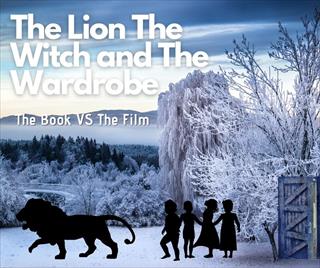The Lion, the Witch and the Wardrobe- Book vs Film

C.S Lewis’ magical world of Narnia came alive on the big screen for the first time in 2005 with ‘The lion, the witch and the wardrobe’ directed by Andrew Adamson. In essence the story remains the same, 4 siblings (Lucy, Edmund, Peter and Susan) walk through a magical wardrobe to find the world of Narnia which is ruled by the White Witch. They try and find Aslan, a lion, who is rumoured to have the power to save the land from its perpetual state in ice. Essentially this is where the similarities end.
The original book was written for children but the film adaptation was modified to be suitable for both children and adults. This means that some of the narrative ‘gaps’ are filled such as the reason for the children being in the middle of the countryside without their parents. The film starts with a bombing scene in which the children and their mother are forced to hide in a shelter in the garden and as a result they are evacuated. The story is enriched by all of these considered and well thought out additions.
The other major difference between the book and the film is that the latter lacks the Christian references that are so imposing in the former. Reading the book as an adult is a totally difference experience from reading it as a child because the levels of religious references are completely unavoidable whereas before they were almost unnoticeable. Adamson made the wise decision to heavily tone them down making the film more inclusive and far less politically motivated. Aslan is still present, as to take him out would be wrong and detract from the overall story, but he serves as a powerful fair ruler more than a representation of Jesus Christ.
In this one particular occasion, neither the book nor the film is inherently better because they both have their merits and their downfalls. The magic and wonder of being able to walk through a wardrobe and find a new world is perfectly encapsulated in both and as a result they are both worth experiencing.